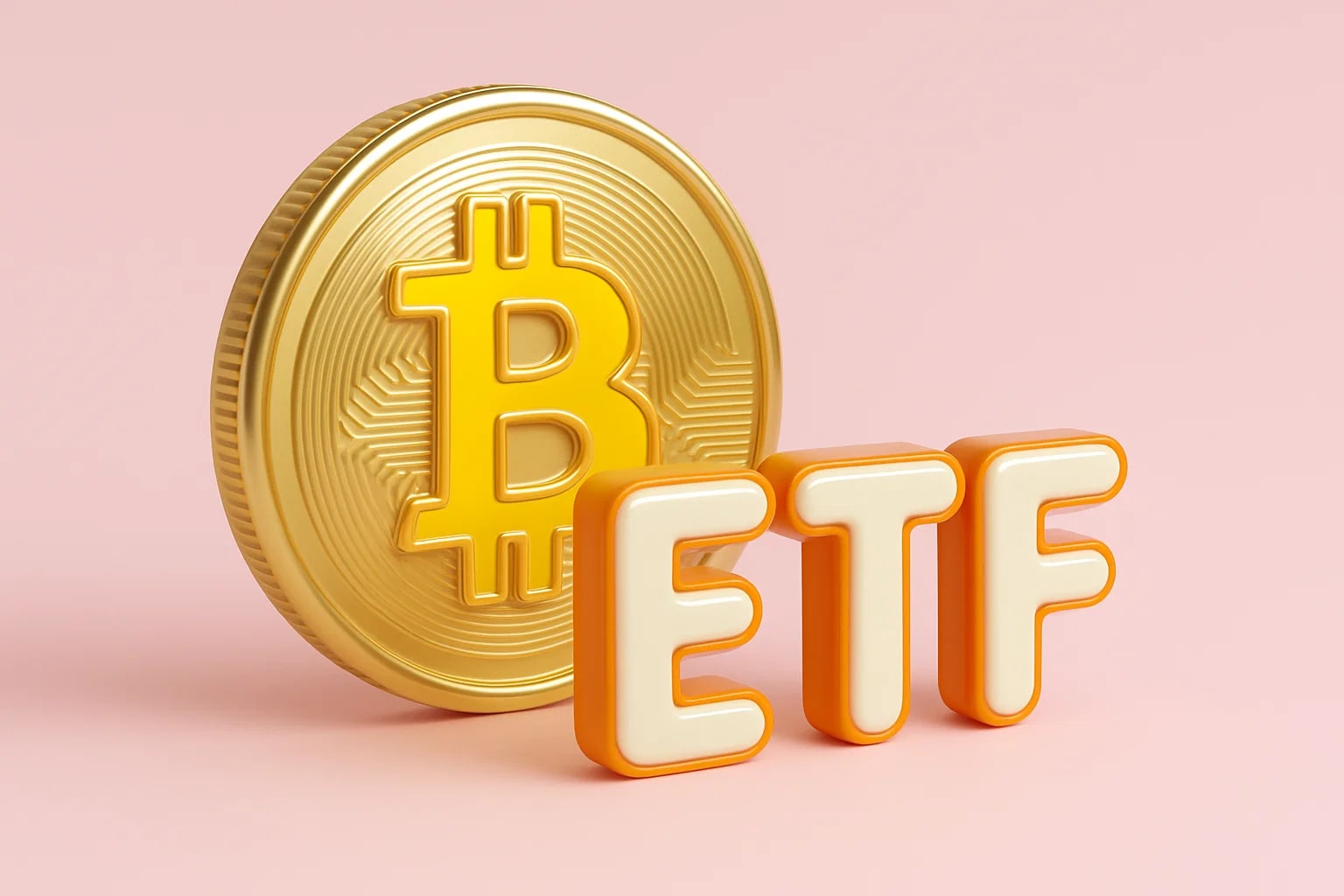
Bitcoin (BTC-USD) Struggles at $100K as IBIT Leads $558M IBIT ETF Exodus Amid Market Liquidations
After seven outflow days, Bitcoin ETFs shed $1.2B—IBIT drops $131M, FBTC $256M, ARKB $144M—as BTC wipes $1T in market value while support at $100K steadies | That's TradingNEWS
BTC-USD: ETF Exodus, Whale Rotation, and Institutional Resilience as Bitcoin Fights to Hold $100,000
Bitcoin (BTC-USD) is navigating one of the most volatile institutional cycles since spot ETFs were approved, as fund flows oscillate between historic inflows and abrupt exits. The cryptocurrency slipped below $100,000 for the first time in three months this week, wiping out over $1 trillion in total crypto market capitalization and triggering 339,448 liquidations worth $1.3 billion. Yet beneath the surface chaos lies a structural transformation: despite daily net outflows from major ETFs like BlackRock’s iShares Bitcoin Trust (IBIT) and Fidelity’s FBTC, aggregate institutional exposure remains near all-time highs, and global ETF penetration into Bitcoin’s circulating supply stands at 6.67%—equivalent to $138.1 billion in assets under management.
ETF Flows: From Record Inflows to Historic Outflows
The week ending November 8 marked a defining moment for Bitcoin ETFs. U.S. spot ETFs recorded $558 million in net outflows on Friday, their largest single-day withdrawal since August 1. Fidelity’s FBTC led the exodus with $256.7 million pulled, while Ark & 21Shares’ ARKB saw $144.2 million in redemptions—its sharpest drawdown relative to total AUM. Even BlackRock’s IBIT, the bellwether of institutional sentiment, posted $131.4 million in outflows, marking the seventh red day in eight sessions. These losses erased much of the inflow momentum that had stabilized BTC near $112,000 earlier in October.
However, cumulative ETF metrics still portray remarkable depth: IBIT alone holds 4% of Bitcoin’s circulating supply, while total spot ETF inflows since January 2024 exceed $59.96 billion, keeping institutional ownership above historical averages. JPMorgan’s Q3 filing revealed a 64% quarter-over-quarter increase in IBIT holdings to $343.5 million, reflecting continued balance-sheet exposure despite market weakness. Meanwhile, Grayscale’s Bitcoin Mini Trust (GBTC Mini) grew assets 15% to $5.46 billion through September 30, even as outflows rotated into lower-fee competitors.
Price Action and Market Mechanics: Liquidation-Driven Cascades
BTC collapsed from $112,500 resistance to $101,290 on November 4, before stabilizing near $102,000. The move coincided with leveraged long liquidations, margin compression, and automated ETF rebalancing. Institutional reallocation amplified selling pressure as large custodians transferred assets: BlackRock moved 2,042 BTC ($213 million) and 22,681 ETH ($80 million) to Coinbase—interpreted by markets as defensive positioning. The magnitude of these flows caused cumulative daily liquidations across crypto derivatives to top $1.3 billion, one of the heaviest sessions of 2025.
Institutional Repricing: Rotation, Profit-Taking, and Global Expansion
Despite U.S. outflows, BlackRock continues to expand internationally. The firm’s plan to launch its iShares Bitcoin ETF (IBIT.AU) in Australia mid-November 2025 underscores strategic diversification. The Australian fund is expected to mirror IBIT’s custodial model with cross-listed exposure to North American liquidity pools. Globally, BlackRock’s Bitcoin ETF ecosystem attracted $205 billion in Q3 inflows, dwarfing competitors, while the firm’s cumulative net inflows since inception exceed $300 billion. This expansion contradicts the notion that the ETF trade is fading; rather, it reflects regional rotation and regulatory arbitrage, with U.S. investors de-risking ahead of fiscal uncertainty while international funds scale exposure.
Whale vs. Retail Divergence: A Warning Signal
On-chain data from Santiment shows that whales—wallets holding 10–10,000 BTC—offloaded 32,500 BTC since October 12, even as retail wallets increased accumulation. This divergence historically precedes short-term price weakness, as large holders typically lead directional shifts. The 15% drop from $115,000 to $98,000 confirms that distribution pressure outweighed retail absorption. Nevertheless, on-chain realized profit metrics indicate that selling intensity is declining near $100,000, signaling early-stage stabilization.
Macro Drag and Policy Shock: The Double Anchor on BTC
The extended U.S. government shutdown and U.S.-China trade frictions have drained speculative liquidity from the crypto complex. The Dollar Index (DXY) rose above 107.3, pressuring all risk assets. According to Mitrade, macro uncertainty has forced institutions to tighten risk limits, temporarily reducing exposure to volatile ETF vehicles. This liquidity drought mirrors mid-2023 conditions, where outflows persisted for six weeks before a strong institutional reentry. Historical ETF data suggests that Bitcoin tends to bottom within 8–10 trading days after multi-billion-dollar outflow spikes, setting the stage for potential accumulation if macro stress moderates.
ETF Concentration and Market Structure
IBIT’s market share fell to 73.2% from a three-month high of 82.3%, as outflows redistributed into smaller funds with lower fees. Fidelity’s FBTC now commands roughly 8.6% of ETF-held BTC, while Ark’s ARKB holds 1.9%, positioning them as secondary liquidity anchors. Cumulative ETF net asset value stands at $138 billion, equivalent to 6.67% of Bitcoin’s total capitalization—up from 4.2% at mid-year. This institutional concentration means ETF redemptions directly translate into price volatility, with intraday ETF rebalancing often triggering synthetic sell orders on Coinbase, Gemini, and Bitstamp through algorithmic market makers.
Read More
-
QQQM ETF Climbs on $5T Nvidia Surge and $4T Microsoft, Apple Milestones as AI Momentum Lifts Nasdaq
08.11.2025 · TradingNEWS ArchiveStocks
-
XRP ETFs XRPR and XRPI Rally as SEC 20-Day Countdown Begins for 21Shares and Franklin Templeton Approval
08.11.2025 · TradingNEWS ArchiveCrypto
-
Natural Gas Price (NG=F) Retreats to $4.27 as Mild Weather and Record Output Cap Rally
08.11.2025 · TradingNEWS ArchiveCommodities
-
USD/JPY Price Forecast - Yen Reclaims 153.00 as Dollar Strengthens on Yield Stability and Japan Eyes ¥158–¥160 Line
08.11.2025 · TradingNEWS ArchiveForex
Contrasting Altcoin Sentiment: Solana’s ETF Divergence
As Bitcoin ETFs bled over $1.2 billion and Ethereum ETFs lost $507.7 million, Solana ETFs gained $136.6 million in fresh inflows, marking the ninth consecutive positive session for Bitwise’s BSOL. This contrast underscores capital rotation within institutional crypto exposure, as investors rebalance from high-momentum assets into yield-efficient alternatives. Solana’s continued inflows highlight risk-on appetite among hedge funds even as Bitcoin consolidates—a sign that institutional money remains active, not withdrawn, from the asset class.
Technical Context: Support at $100K, Resistance at $112.5K
Bitcoin’s chart structure remains defined by the $100,000 support and $112,500 resistance zones. RSI has reset near 42, reflecting oversold conditions without capitulation. A breakout above $112,500 could ignite short covering toward $126,000, the next liquidity cluster according to derivative positioning. Conversely, a breach below $100,000 exposes $95,800–$93,500 support bands. Implied volatility rose to 54%, its highest since August, signaling potential for large-range movement tied to ETF re-entry or macro resolution.
Forecast Models and Institutional Outlook
JPMorgan maintains a 12-month Bitcoin price projection of $170,000, conditional on ETF inflows resuming above $1 billion per week. Bitfinex analysts foresee short-term consolidation between $100,000–$112,000, citing profit-taking and options expirations as temporary headwinds. On the structural side, CryptoQuant’s Julio Moreno notes that long-term holder supply remains near record highs, suggesting that strategic investors are unshaken by current volatility.
Behavioral Data: Fear and Greed Index and Derivative Flows
The Crypto Fear and Greed Index fell to 20, the lowest in seven months, entering “extreme fear” territory—a condition that historically aligns with cyclical bottoms. Open interest in perpetual futures declined 13% week-over-week, implying a washout of leveraged traders. Funding rates turned slightly negative across Binance and Bybit, reducing the risk of cascading liquidations. This mechanical reset often precedes a period of price stabilization followed by gradual reaccumulation.
Institutional Expansion Beyond the U.S.: Strategic Hedge Against Regulation
While U.S. ETFs experienced their largest weekly redemptions in 2025, international Bitcoin ETF launches in Australia, Hong Kong, and Switzerland continue to attract inflows. Australian regulators greenlit BlackRock’s IBIT.AU, while Hong Kong’s HashKey ETF recorded $60 million in week-one subscriptions. Collectively, global Bitcoin ETFs now control over 1.4 million BTC, representing a growing decentralization of institutional holdings beyond U.S. jurisdiction.
Insider and Treasury Positioning
Corporate treasury re-engagement has quietly returned. Several public companies, including MicroStrategy, Galaxy Digital, and Marathon Digital, expanded holdings during the recent dip. Insiders across mining and fintech sectors show net accumulation, reflected in Form 4 filings tied to executive purchases in Bitcoin proxy stocks. Institutional filings aggregated on TradingNews Bitcoin ETF Insider Tracker confirm that despite ETF outflows, corporate entities continue to use private wallets and over-the-counter desks to accumulate BTC.
Sentiment Synthesis: Retail Optimism vs. Institutional Caution
Retail wallets continue to buy aggressively, with addresses holding under 1 BTC growing by 3.2% over the past 30 days. However, the historical pattern remains intact—prices tend to follow whales, not retail. The divergence between whale distribution and retail accumulation remains the clearest short-term bearish signal. Nonetheless, institutional fund managers remain strategically exposed, evidenced by sustained custody volumes and derivative positioning aligned for upward breakouts once volatility normalizes.
Verdict
Buy (Speculative, Accumulation Phase). Despite short-term pressure and $1.2 billion in ETF outflows, Bitcoin remains institutionally anchored. The combination of long-term ETF retention, $100K structural support, and anticipated global fund launches form the basis of a medium-term rebound case. If BTC-USD holds above $100,000 and ETF flows stabilize, a return toward $126,000–$130,000 is plausible before Q1 2026. Institutional rotation—not abandonment—is defining this cycle. Bitcoin remains in a controlled reset, not a collapse.

















